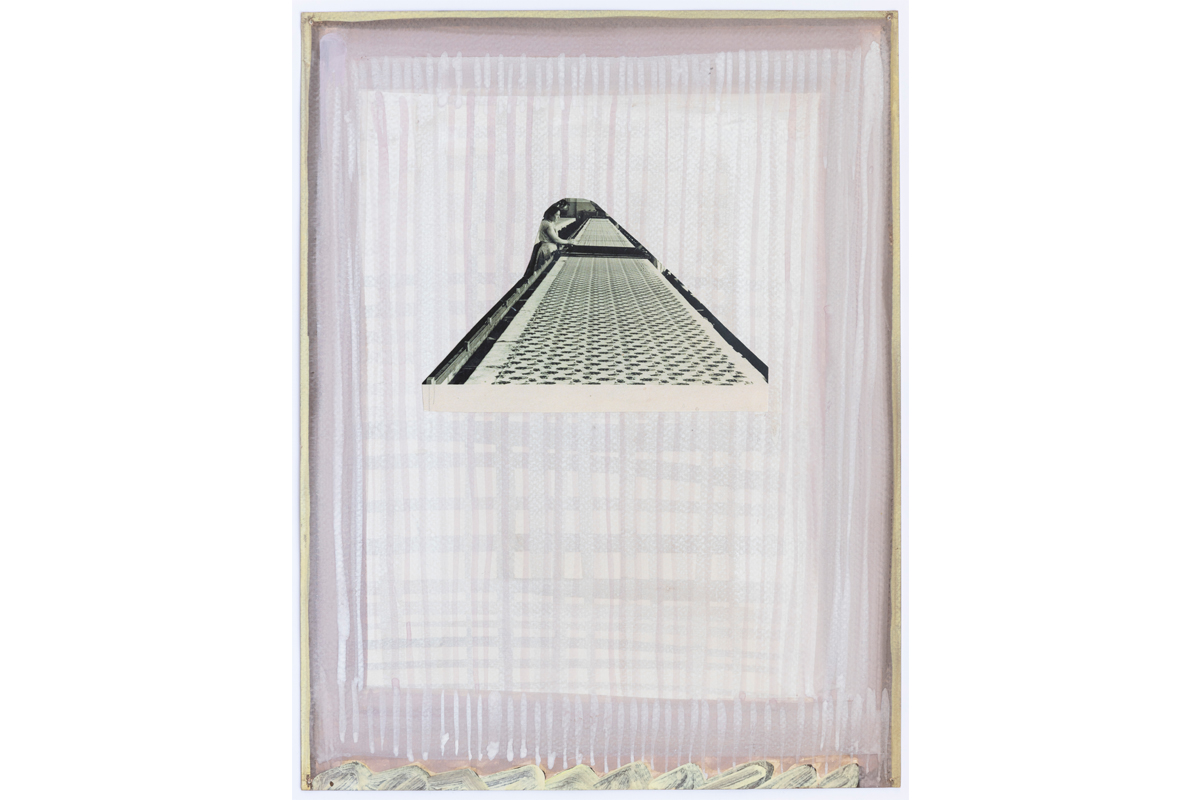
Two artists working from deep within materiality and texture, present their works in a dialogue for the first time. The paintings of Clara Brörmann and the drawings and textile pieces of Nino Kvrivishvili approach abstraction in different ways, yet radiate a similar energetic connection to the viewer.
How to deal with the alarming state of the world today, and how to continue making art? Our daily consumption of images is incessant and leads to insensitivity and indifference. Global communication has never been so accessible, yet never so dense. Clara Brörmann’s paintings propose a different way of communicating and looking. Although abstract, they hold our gaze. They invite a slowness, opening up a space for contemplation as an alternative to fast-paced superficial image scrolling.
Brörmann’s paintings are built up in an almost sculptural way – layers of acrylic and oil paints are placed on top of each other, and scraped off again. The gestures of adding and taking away charge the haptic surface with a palpable sense of time. Seemingly abstract and flat, the surfaces bear an individual complexity similar to human skin, and form presences the viewer can relate to. Their physicality appeals to a desire of touch, of mutuality, of connection.
The surface of Nino Kvrivishvili’s works has a very different texture. She works with drawing on the one hand, and textile on the other hand. In her home country Georgia, the textile industry was prominent several decades ago, yet has now completely disappeared. Researching this particular history, and collecting personal memories of older generations, who worked in those industries, has inspired her practice for years; from collages featuring fragments of old photographs of fabric shops, to woven pieces with shapes echoing industrial machines, spools, loom details.
The images in her series of paintings on silk are stripped of any figuration, until only their essence remains. The layers of meaning behind the original images that inspired these shapes, are hidden. Yet the silk surface seduces the viewer, invoking a desire of touch and closeness. Her textile works possess a remarkable haptic quality, not unlike Brörmann’s paintings. The repeating patterns and motifs in Kvrivishvili’s drawings and weavings reference the essence of textile design. Remarkably, the repetition creates a meditative, contemplative pace, thereby contradicting the fast rhythm of industrial production and opening a space for thoughts on (industrialized or human) labour and its place in society.
Like memory foam, both artists’ works reflect personal and collective histories. The surfaces contain within their layers a preserved memory of the artist’s moving and changing body. They retain the traces – visible and invisible – of where and how their hands manipulated the materials. As a viewer, the palpable presence of manual labour creates a connection transcending the texture of the piece – from human (artist or worker) to human (viewer and contemplator). The works, of Brörmann as well as Kvrivishvili, therefore invite us to reflect on our own viewing position: how do we look? How do we perceive art, our political history, the physicality of our memories? Which position do we decide to take, in this society of the image? What are we really looking at and who gazes back?
Tamara Beheydt, July 2025

